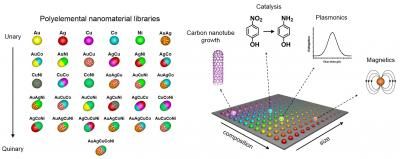Speeding food safety tests to deliver fresher products
Advertisement
A research team led by food scientist Sam Nugen at the University of Massachusetts Amherst recently received a $495,950 grant from the U.S. Department of Agriculture's National Institute of Food and Agriculture (NIFA) to improve food safety by developing faster methods for detecting and separating microbial contamination from food.
New techniques designed by Nugen and fellow food scientists Amanda Kinchla and doctoral student Juhong Chen, with nanochemist Vincent Rotello, should help food manufacturers avoid costly waiting for safety tests before products can be sold. Food companies may soon need to prove that their products are safe before they ship, since the Food Safety Modernization Act of 2011 shifted the Food and Drug Administration's focus from responding to food contamination to preventing it.
As Nugen explains, "The current method of testing a batch of chocolate pudding, for example, means collecting a sample, sending it to a lab where a broth is prepared and any bacteria found are plated and grown. It can take several days to a week before they're identified. Meanwhile, the company has to warehouse its pudding during the testing period. We're working on separating bacteria from a food sample much more quickly, in minutes, so technologies that already exist for testing a clean sample can be used. It should break the bottleneck in the system and save considerable time and expense."
Further, he adds, about 46 percent of foodborne illness outbreaks come from fresh fruit and vegetables, which can't be held for days of testing without losing freshness and nutritional quality. Faster test methods will help add a layer of safety to the fresh produce market.
For this work, the researchers create beads made of magnetically charged cobalt nanoparticles coupled with microbe-specific phages, or viruses, each of which binds to a specific, disease-causing bacteria such as Listeria, E. coli or Salmonella, known as "the big three" of food-borne pathogens. The magnetic virus-bacteria beads can then be quickly removed from liquid samples with a magnet.
Nugen says, "It works really well to magnetically pull them out of solution. The cobalt nanoparticle beads bind to the phages much more strongly than antibodies, and cobalt is very strongly magnetic so the method works quickly, much faster than other magnetic nanoparticles such as iron, for example. Using the iron in the retrieval process might take overnight, but the cobalt works in 30 seconds," he adds.
The UMass Amherst researchers have shown that their methods work in non-food liquids; their new NIFA grant will allow them to begin testing in actual food samples such as unpasteurized whole milk. The group will be inoculating spinach leaves with E. coli and then determining how efficiently the bacteria can be separated from the sample.
Nugen and colleagues are also working on a method to detect disease-causing microbes in dry food samples such as cereals and grains by sampling air sucked from spaces between individual bits as they pass by on a conveyor belt. Particles collected this way will be pulled into a "wetted cyclone" filter from which a clean sample can be prepared for microbial testing.
The UMass Amherst research team will run a pilot air-sampling project for separating microbes from dry cereals at Holliston Technologies in Owensboro, Ky.































































